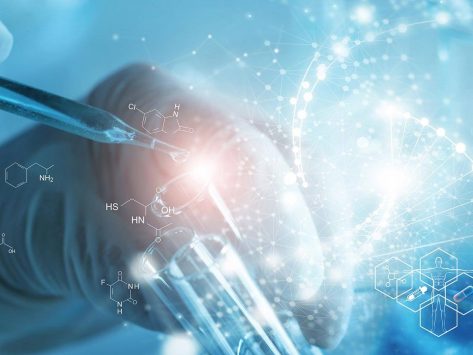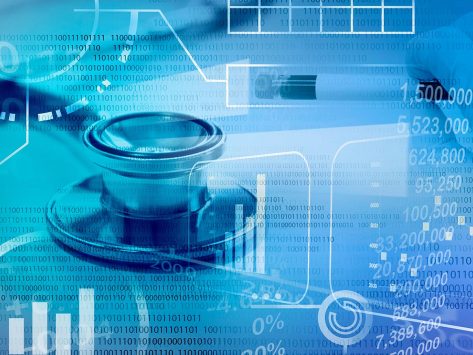Patient Health Outcomes as north star of Healthcare ecosystem
Changing healthcare environment is resulting in a global consensus that all medical products and services must provide evidence of value – improvement in patient health outcomes and economic efficiency. The stakeholders across the patient treatment value chain – pharma, medical devices, providers, payers – have realized that patient centricity and focus on health outcomes improvement are the “north star” for the industry. The demonstration of development on these dimensions has become an essential requirement for significant decisions regarding the patient’s health. The industry had made significant investments in generating health or real-world data across patients’ health journey to make rapid decisions, across various healthcare decision points.
Innovative, plus traditional, Real World Data for comprehensive patient insights
For the Life Sciences industry (pharmaceuticals, medical devices, clinical research organizations, biotech, digital therapeutics, and others) insights and evidence generation with a focus on leveraging the real-world data are becoming instrumental in drug development and commercialization process. The rapidly increasing patient-centric data is informing the process and decisions from discovery, clinical development, trial design, trial outcomes (e.g. efficacy, toxicity) to identifying best treatment setting, provider education, value effectiveness for re-imbursement and overall long term impact on patient health-life.
Today, Life Sciences industry has access to multiple patient centric data sources including claims data, EMR, Lab/diagnostics, patient registries, pharmacies, disease registries as well as innovative, emerging digital health data including wearables, digital implants, health app, social media and much more. The availability of these digital and innovative data sources has significantly increased the ability to have more comprehensive insights into patient health and effectiveness of the prescribed treatments.
For example, drug development is an extremely expensive process and often relies on an inefficient clinical trial process. Over the last few years, RCT data is being married with claim administrative data to deliver insights into the effectiveness of treatments. However, claims data will show that a patient filled a prescription but wouldn’t necessarily give insights into health outcomes, improvement in diagnostic parameter or side-effects. With various sources and abundance of patient-centric data, such gaps regarding patient health insights can be easily bridged, providing life sciences organizations the relevant solutions to advance the drug development process.
From Real World Data to Real World Patient Insights – The challenges
Having access to real world data is merely the start of patient insights journey. Analyzing these rich sources of patient data is critical to uncover numerous deep insights such as which practices are most effective in improving overall patient health life or which approaches, and interventions can significantly improve the effectiveness of patient care. With this view, several Life Sciences organizations have become increasingly aware of the importance of the application of cutting-edge data science and analytics techniques to derive meaningful insights from the complicated and vast real-world data sources, which is why life sciences organizations have started on their journey to analyze real-world data.
While this is a widely accepted thought process today across various stakeholders in the healthcare value chain, however, the execution capability to leverage advanced data science and machine learning is still a constraint. With the complexity involved in the patient data universe, analysts end up spending a significant amount of their effort and time in underlying data preparation and integration activities. These challenges leave behind an unrealized potential in deriving outcomes and insights from multi-dimensional patient data from various sources.
Data Science Platform to accelerate Real World Insight for faster action
With the growing demand for patient insights and evidence generation, a bespoke analytics or study execution approach i.e. grounds-up execution for each study, is an extremely inefficient approach and will somewhat hinder the speed and agility required in decision making in today’s health world.
Consequently, a Real World Evidence Platform driven approach which can deliver impact and value across RWD Studies and delivering patient insights using Data Science at scale is critical to enable real-world insights as a core enterprise asset.
Focused on bringing the best-in-class AI/Machine Learning capabilities to Real World insights, the Real World Evidence Platform also plays an assistive role in enriching the productivity of analysts in multiple ways.
Advanced Analytics (AI/ML) for Real-World Insights
Modern life sciences organizations can possibly leverage AI/ML, predictive analytics capabilities to enhance the insights generated from real-world data. With the ability to uncover insights from new data sources, formats (text, unstructured, wearables) leveraging Natural Language Processing and Natural Language Generation, the platform provides relevant solutions for improving public health.
Pre-built Machine Learning Model Libraries
Pre-built model libraries can integrate new user-defined models with the flexibility of external tool integration (e.g., Excel, BI/reporting systems), providing healthcare players with promising health outcomes and higher productivity.
Reduced scale-up time for new studies
The platform uses standardized analytics processes, which dramatically reduces the ramp-up time along with evidence synthesis templates for a rapid generation of insights resulting in an extensive array of desired results. Also, the use of automated ML model workflow and performance monitoring can possibly revolutionize how life sciences organizations can work to reduce spending and improve patient outcomes.
Improved Reusability
The reusable data features and models help build institutional knowledge for the healthcare players. Moreover, the pre-configured patient data model covering patient 360 profile, diagnosis, procedures, physician, Rx prescription, digital health data that is suitable for healthcare professionals assists in drawing critical actionable insights in the context of patient care. The platform also presents a flexible data model designed to integrate new, evolving patient data elements.
Deeper patient health insights generated at scale to drive better health outcomes – is a critical imperative for the Lifesciences industry as it aspires to play a leading role in the patient health continuum. There are certain limitations of current bespoke Real-world analytics approaches. Such restrictions are a serious deterrent in this pursuit and Life Sciences organizations’ ability to deliver on the healthcare “north star” – Improve Patient Health Outcomes.




